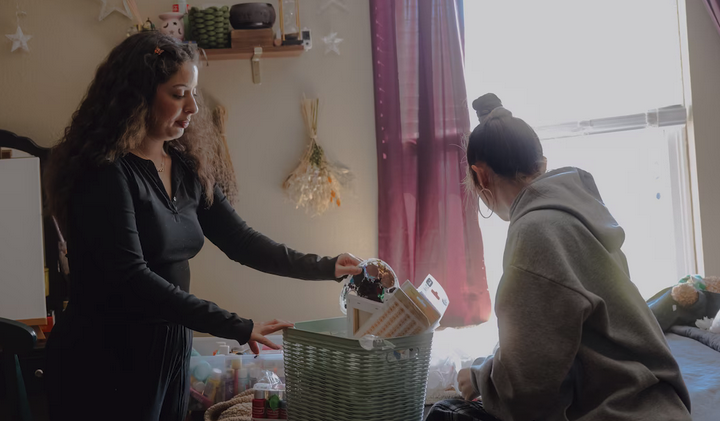Norris-De La Cruz had not wanted to lose her pregnancy.
When she got a positive test in early January, she said, she and her boyfriend immediately started to imagine who their child might become.
“We made jokes all the time like, ‘Maybe he’ll be a competitive chess player,’” Norris-De La Cruz said. “We thought the possibility of creating something that was a unity of us was really beautiful.”
It was justone week later that Norris-De La Cruz started to cramp and bleed.
She went straight to the emergency room on Jan. 14, where doctors measured her pregnancy hormone levels, performed an ultrasound and told her to return in 48 hours. By her second appointment two days later, her pregnancy hormone levels had dropped precipitously, according to medical records — leading the doctors to suspect a “failed early pregnancy,” although they acknowledged in the records that they could not entirely rule out the possibility of an ectopic.
Over the next few weeks, Norris-De La Cruz said, she still didn’t feel well — experiencing bouts of abdominal pain so severe that she struggled to stand. Thinking she might have appendicitis or a urinary tract infection, she went to the health center on her campus at the University of Texas at Arlington,around noon on Feb. 12, where a nurse told her to go straight to the emergency room.
Then came the frightening diagnosis at the Arlington Memorial ER.
After her confrontation that day with the OB/GYN, Norris-De La Cruz spoke with a different doctor on call who specialized in emergency medicine and had also reviewed her tests and ultrasound scans. He disagreed with the OB/GYN’s decision to discharge her, according to medical records. While he said he was not permitted to do the surgery himself — that required an OB/GYN — he recommended she remain in the hospital overnight.
“I do not feel comfortable discharging her home and do not think that is in her best interest,” the emergency room doctor wrote in her records.
The following morning, Norris-De La Cruz was turned away by a second OB/GYN, who determined that there was “no operation warranted,” according to records. The OB/GYNdischarged her and told her to follow up in 48 hours.
As Norris-De La Cruz prepared to leave the hospital around 10 a.m. on Feb. 13, her mother was standing outside in the parking lot, begging a woman at a New Mexico abortion clinic over the phone to help terminate her daughter’s ectopic pregnancy.
The woman seemed confused, Lloyd said.
“Texas should be able to help you,” Lloyd recalled the clinic staff member saying. “Why do you want to come here?”
She gave Lloyd the number for another office — a former abortion clinic in Houston that provides ultrasounds and out-of-state referrals. But they didn’t know what to say, either.
“You could come to a Houston hospital but they might tell you the same thing,” Marjorie Eisen, a patient advocate at Houston Women’s Reproductive Services, told Lloyd when she called, in an exchange observed by The Post. “We’ve had luck with our county hospitals sometimes and sometimes not.”
Houston Women’s Reproductive Services has consulted with three other patients in similar situations since Jan. 1, said Kathy Kleinfeld, the clinic’s administrator — all women who she said have been turned away from hospitals with ectopic pregnancies.
Eisen suggested Lloyd talk to a doctor she knew in Dallas.
“I’m so sorry you’re dealing with this,” Eisen said. “It’s a nightmare.”
Lloyd started to panic, pacing back and forth as she tried to figure out what to do next. Her daughter was going to die, she recalled thinking to herself: Why wouldn’t anyone help her?
Back inside the hospital, Norris-De La Cruz got a call from her best friend, Monica Perez, whom she’d been texting with updates throughout the night.
“I’m on my way to my OB/GYN,” Perez recalled saying as she drove to one of her regular appointments. “Do you want me to tell the nurses and see if they can squeeze you in?”
Norris-De La Cruz immediately texted her friend a picture of her sonogram, hoping the image would be enough to convince them.
Perez called back 20 minutes later.
“They can see you at 2 o’clock,” she said.
Last modified: June 24, 2024

